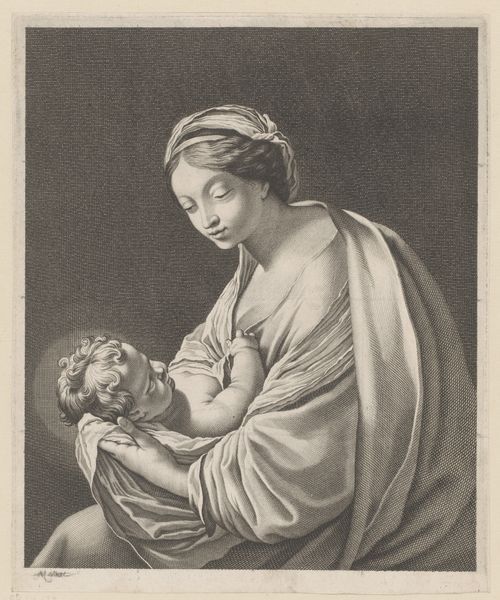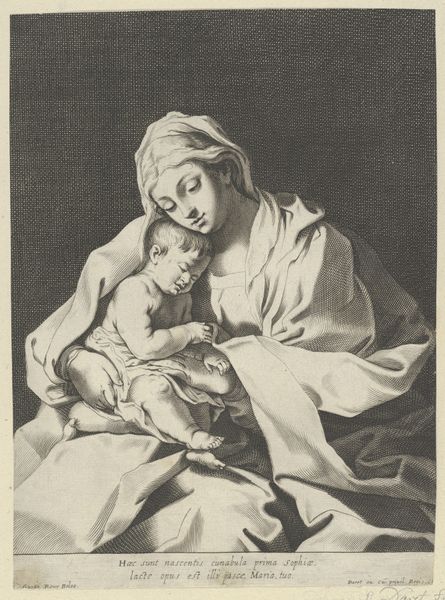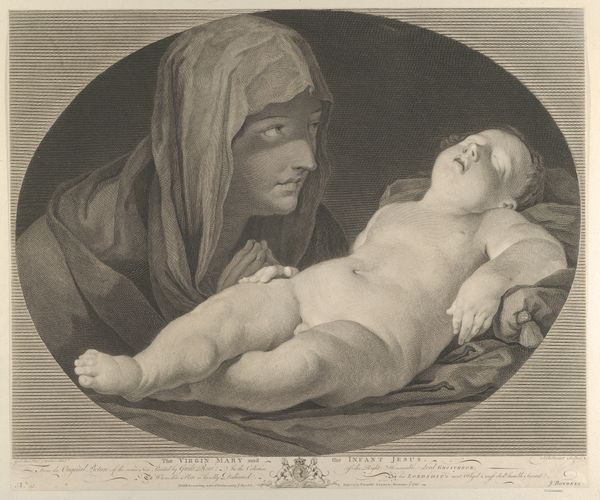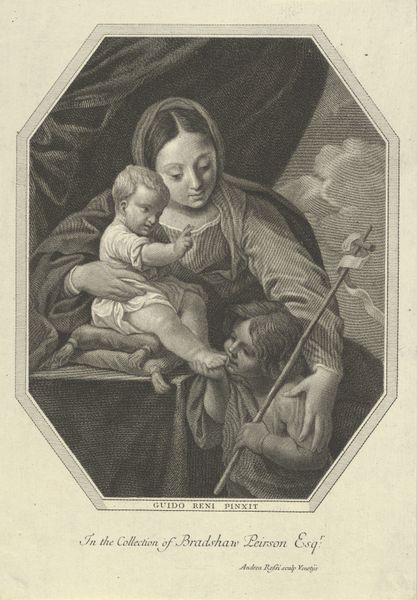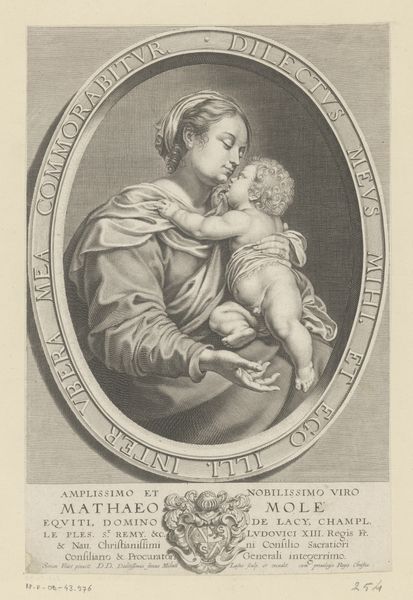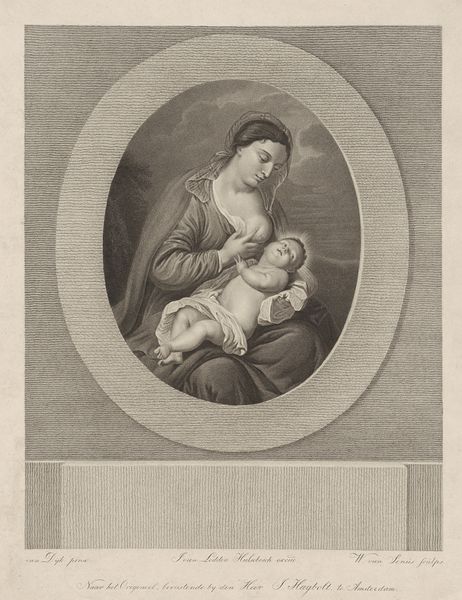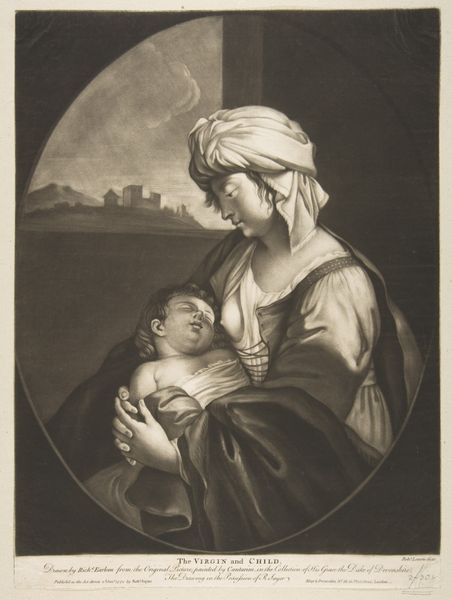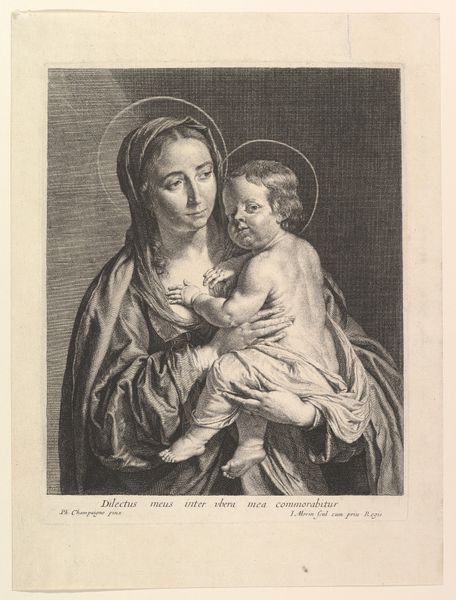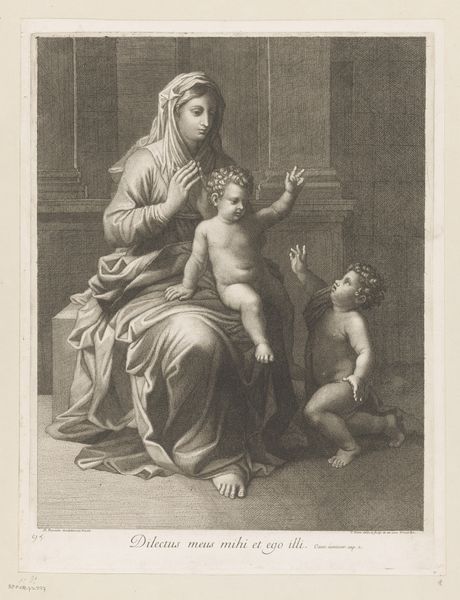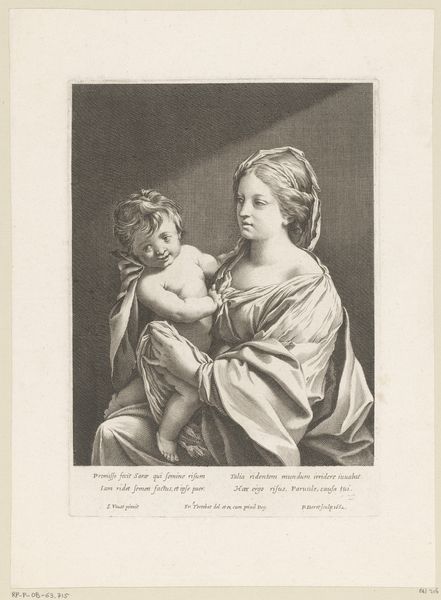
drawing, print, engraving
#
drawing
#
baroque
# print
#
figuration
#
history-painting
#
italian-renaissance
#
engraving
#
miniature
Dimensions: sheet: 7 3/4 x 5 3/8 in. (19.7 x 13.6 cm)
Copyright: Public Domain
Curator: Well, right off the bat, I’m struck by the quiet dignity. It’s not saccharine, but deeply felt, wouldn't you agree? Editor: Absolutely. There’s a serenity here that transcends the typical Madonna and Child image, though it's undoubtedly informed by a tradition of European figuration. Let's take a moment to situate this piece. What we're looking at is "Virgin and Child", an engraving made sometime between 1600 and 1688 by Gerard Valck, currently held at the Metropolitan Museum of Art. Curator: Engraving… you can almost feel the scratch of the burin, can't you? Though it is monochrome, and almost miniature-like, it carries itself like a painting. It makes me wonder about what the role of art was during the Renaissance? Was the church more of a gallery space, in that respect? Editor: Precisely! And thinking about context—this piece emerges from the Italian Renaissance, filtered through Valck’s particular lens, as prints gained popularity. Note how the figures occupy a very simple plane within an oval, offering almost no narrative outside the interaction between mother and child. The simplicity allows an increased sense of religious experience, without any baroque theatrics or the sort of high drama that defined artwork that came after. Curator: Yet, within that simplicity, the fabric has movement. Notice the shadows suggesting light and form. Valck definitely gives a life of its own to the characters’ draped garbs. Even within limitations, one can create a vibrant moment, if only one can see. What this work brings is something elemental and familiar. To mother; to child. I would hazard the image can be more deeply felt and internalized by more communities for its design. Editor: And think about the political weight—what did motherhood and childcare look like when women held few societal power or protections. Did works such as this reify power dynamics? Or was there an alternative source of reverence on offer here? After all, prints offered increased accessibility, especially in private homes. This sort of intimate devotion speaks volumes. Curator: Yes, I suppose the political lens helps keep my own feelings from floating away entirely! So much historical narrative held inside a single frame. This piece brings so many questions to my mind that, yes, that it has some element that makes people want to return for answers, again and again. Editor: Exactly! A beautiful dialogue between artistic interpretation and political realities—art history thrives precisely because of these interwoven ideas, as this engraving gracefully shows.
Comments
No comments
Be the first to comment and join the conversation on the ultimate creative platform.
